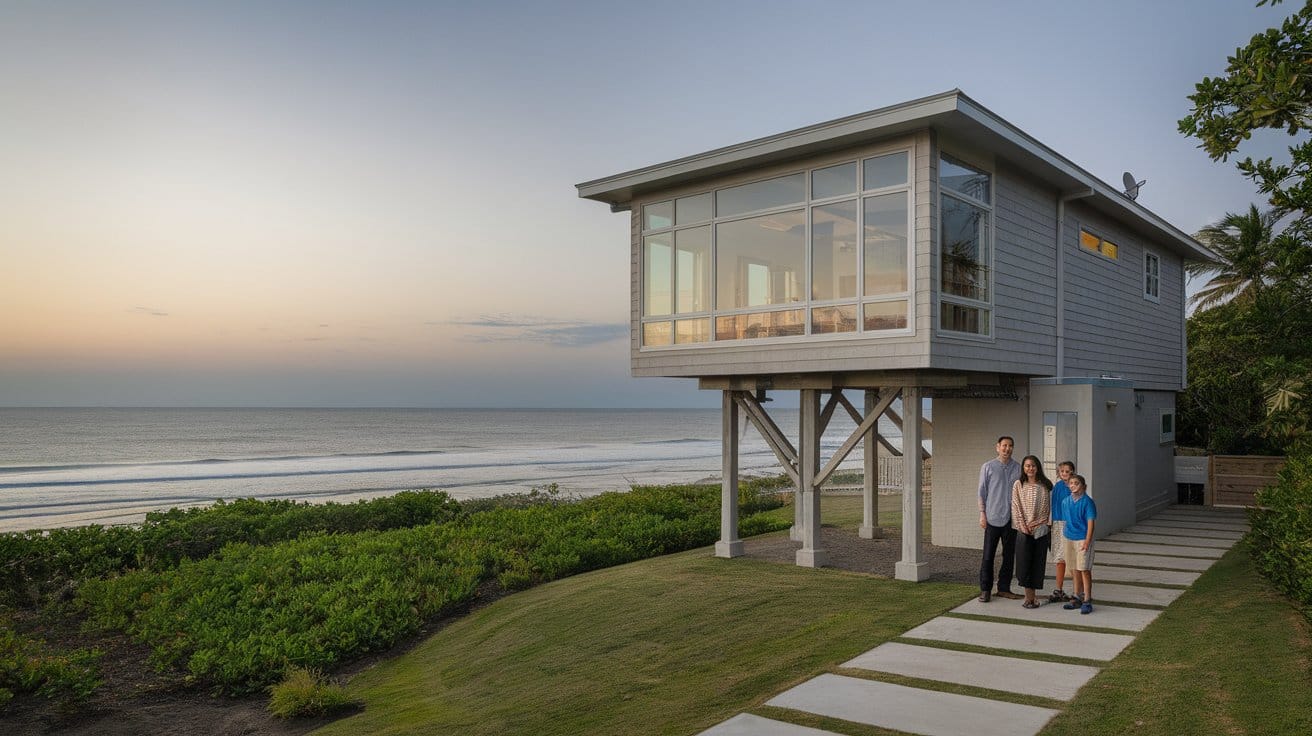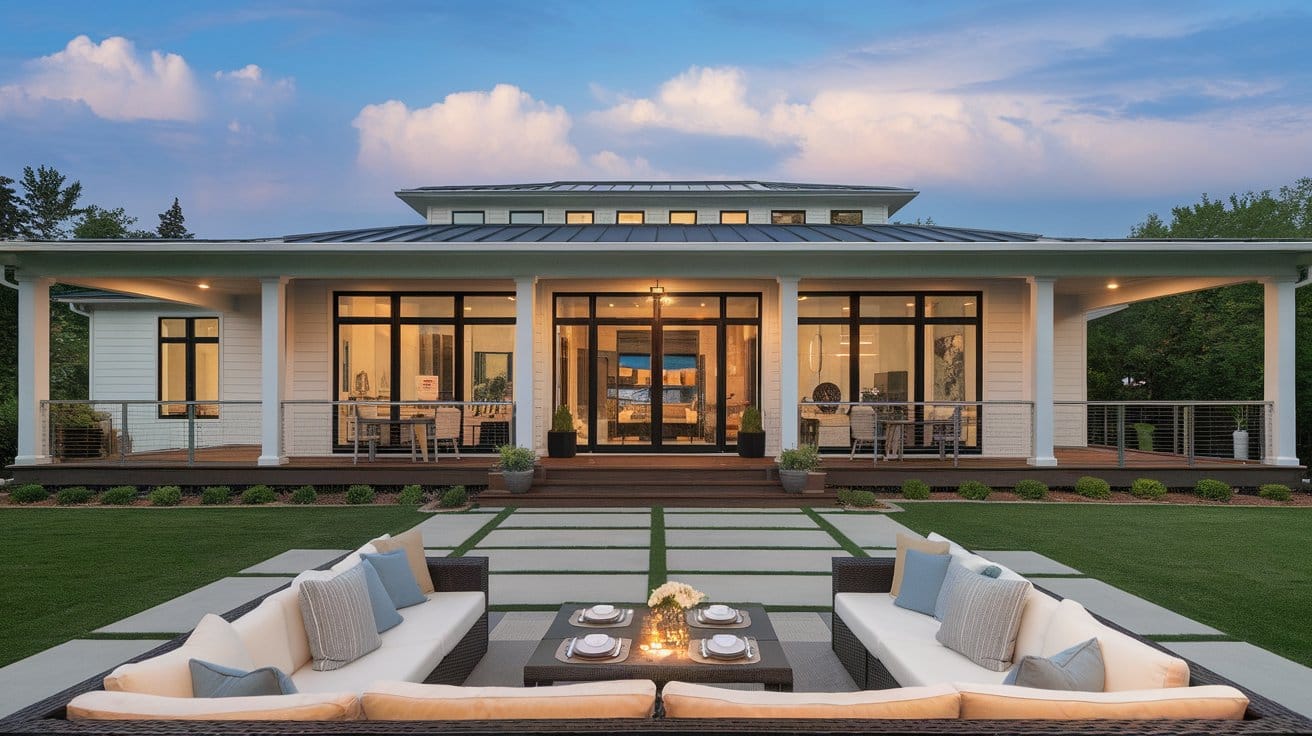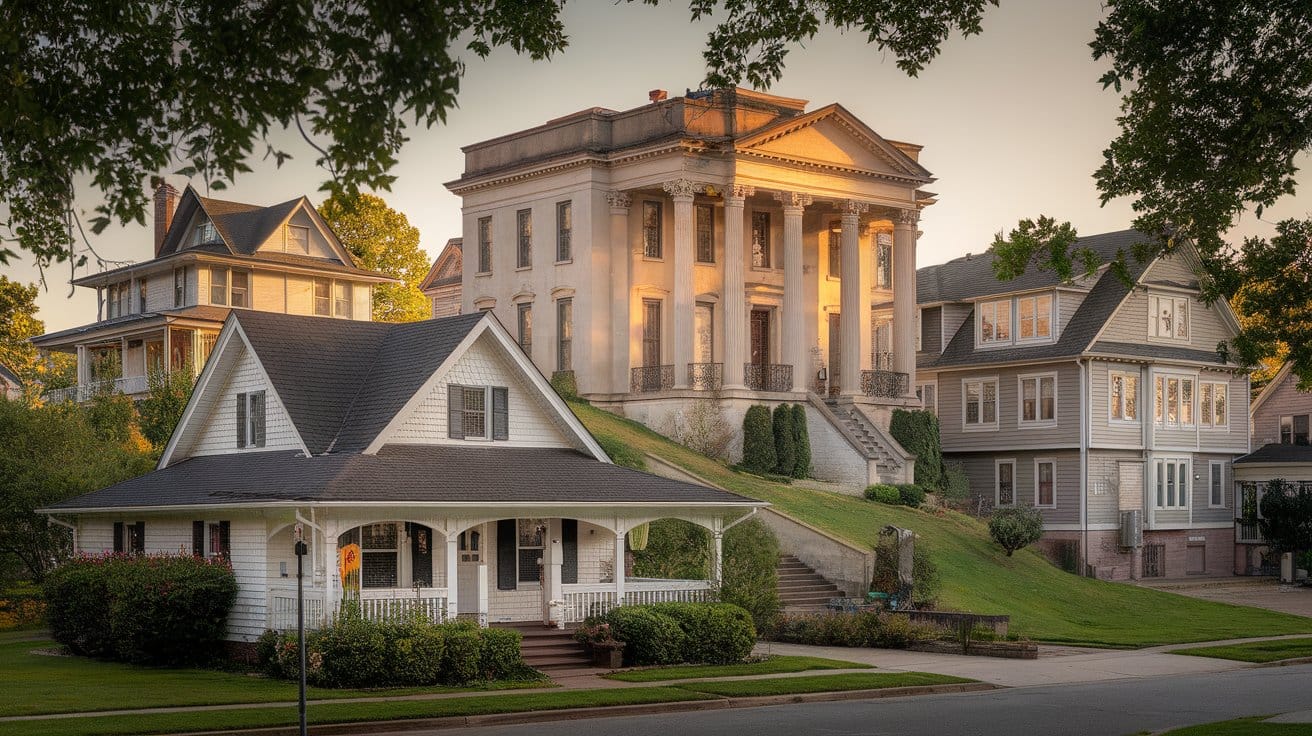Introduction
Natural light plays a pivotal role in enhancing the atmosphere of small living spaces. It helps create a sense of openness, making rooms appear more spacious and inviting. By incorporating light colors and strategic window placements, such as floor-to-ceiling windows, you can maximize the amount of natural light that flows into the room. Additionally, using mirrors to reflect light can brighten even the darkest corners, reducing the need for artificial fixtures during the day. These clever lighting tricks not only boost brightness but also improve the overall ambiance of your space.
To achieve an airy feel, it’s important to use lighting elements that complement natural light. Sheer window treatments allow light to pass through while keeping the space private. You can further enhance this effect by opting for lighter colors on walls and furniture. Small touches like sconces and ambient lighting can help balance the natural light, creating a harmonious, well-lit environment that feels larger and more open.
Key Takeaways
Natural light is essential in small spaces, creating a sense of openness and making rooms feel more expansive and welcoming.
Using mirrors to reflect light and incorporating light-colored surfaces helps brighten even the darkest corners while reducing the need for artificial lighting.
Vertical and floor-to-ceiling windows allow light to flow freely, connecting indoor spaces to the outdoors and making the area feel larger.
Pivot windows offer flexible light control and ventilation, further enhancing the sense of spaciousness in tiny homes.
Multi-functional furniture in Nordic design maximizes space while maintaining an uncluttered, stylish look, contributing to a more organized living area.
Eco-friendly materials and solar panels are integral to sustainable Nordic design, reducing environmental impact and promoting energy-efficient living.
Importance of Natural Light in Small Spaces

Natural light plays a crucial role in making small spaces feel more expansive and welcoming. By allowing sunlight to flow freely into a room, you can visually open up the area, reducing the need for artificial light during the day. Large windows, skylights, and sheer curtains are excellent design choices to maximize natural light. This not only enhances the room’s visual appeal but also helps create a healthier living environment. The ability of sunlight to make a space appear larger is a powerful design trick, transforming even the smallest areas into bright, comfortable sanctuaries.
A Nordic Design Guide to Maximizing Natural Light in Small Spaces
Use Floor-to-Ceiling Windows for Maximum Light Exposure
One of the most effective ways to flood a small space with natural light is through floor-to-ceiling windows. This type of window design allows light to flow freely into the room, creating a sense of openness and visually expanding the area. It also connects the indoors with the outdoors, making the room feel more expansive. Floor-to-ceiling windows are a staple of Nordic design, as they maximize the natural light available, even in areas with limited sunlight during winter months.Incorporate Reflective Surfaces to Bounce Light Around
Reflective surfaces like mirrors, glass, and glossy finishes can significantly enhance the distribution of natural light in small spaces. By placing mirrors opposite windows, you can amplify the amount of light entering the room, brightening dark corners and creating a more open atmosphere. Glass elements in furniture or decor also help light flow more freely, reducing the need for artificial lighting. This design strategy not only enhances the room’s brightness but also gives the illusion of a larger space, which is essential in Nordic-inspired interiors.Opt for Light-Colored Walls and Furniture
In small spaces, light-colored walls and furniture play a vital role in reflecting and dispersing natural light. Soft whites, pale grays, and muted pastels can make a room feel brighter and more spacious by allowing light to bounce around more effectively. Nordic design often emphasizes minimalism, and choosing light colors helps maintain this aesthetic while maximizing the brightness of the space. Avoid dark colors, which absorb light and make the space feel smaller and more closed off.Utilize Sheer Curtains to Maintain Privacy Without Blocking Light
Sheer curtains are an excellent way to maintain privacy without sacrificing natural light. These lightweight, translucent fabrics allow sunlight to filter into the room, keeping it bright while offering some privacy. Sheer curtains are a common feature in Nordic homes, as they complement the minimalist style and enhance the airy, light-filled ambiance that is a hallmark of this design approach. Opt for neutral or light-colored curtains to further amplify the natural light.Integrate Skylights to Bring in Top-Down Light
Skylights are a fantastic solution for maximizing natural light in small spaces, especially in rooms where wall space for windows may be limited. Installing skylights allows light to enter from above, illuminating the space more evenly and providing a sense of openness. In Nordic design, skylights are often used to brighten areas that might otherwise feel dim or closed off. This top-down approach to lighting also reduces the need for artificial fixtures, making the space feel larger and more connected to the outdoors.Minimize Clutter to Let Light Flow Freely
In small spaces, clutter can block light and create a cramped, dark environment. Nordic design emphasizes minimalism and functionality, making it essential to keep spaces clean and organized. By reducing the number of objects in a room, you allow natural light to flow freely, creating a brighter and more open space. Opt for multi-functional furniture with built-in storage to maintain a clutter-free environment, ensuring that light can reach every corner of the room.
Creating a Sense of Openness
In small spaces, achieving a sense of openness is all about how well you use natural light. Installing large windows and using light-colored surfaces help bounce light around the room, giving the illusion of a bigger area. Mirrors strategically placed opposite windows reflect light throughout the space, brightening dark corners and expanding the overall feel. Incorporating glass elements into your design further allows light to flow freely, reducing the need for artificial lighting and making the space feel larger and more open.
Enhancing Well-being with Sunlight
Beyond aesthetics, natural light in small spaces also impacts well-being. Exposure to sunlight has numerous benefits, from boosting mood to improving sleep patterns. In well-lit spaces, residents often experience enhanced energy and productivity. The use of skylights, large windows, and reflective surfaces like mirrors ensures a constant flow of light, creating a lively atmosphere. Reducing the need for artificial lighting during the day also cuts down on energy costs, making it a smart and sustainable design choice.
Creative Nordic Window Designs

Nordic homes are known for their minimalist charm and efficient use of space, and window design plays a key role in this aesthetic. In tiny homes, windows aren’t just for light; they transform the entire living experience. The use of strategic window placement helps illuminate the space naturally, reducing the need for artificial lighting. Large windows or floor-to-ceiling glass doors create a connection between the indoors and outdoors, making the room feel more expansive. Additionally, light-colored window frames and sheer curtains complement the natural light flow, dispersing it evenly throughout the space. These design tricks not only brighten your tiny home but also enhance its overall ambiance and functionality.
Case Study: Maximizing Natural Light with Vertical Windows in Small Nordic Homes
A recent case study from a tiny home project in Denmark highlights how vertical window placements can dramatically improve the sense of space and light in small living environments. The home, measuring just 300 square feet, was designed to prioritize natural light through the strategic use of tall, narrow windows. By installing vertical windows in key areas such as the living room and bedroom, the architects were able to create an illusion of height, making the space feel significantly more open and airy.
These vertical windows allowed sunlight to penetrate deep into the rooms, reducing the need for artificial lighting during the day. To enhance the effect, the interior design featured light-colored walls and minimal furniture, helping the light bounce freely throughout the space. This combination of vertical windows and reflective surfaces not only made the tiny home appear larger but also fostered a bright, welcoming atmosphere that aligns with Nordic design principles.
Vertical Windows Placement
Vertical windows are a popular design choice in Nordic tiny homes due to their ability to make a room feel taller and more open. These windows bring in natural light without occupying too much horizontal space, which is critical in smaller living areas. By directing the eye upward, vertical window placements help create a sense of spaciousness, making the area feel broader than it actually is. Pairing these windows with light-colored walls and minimal clutter enhances the effect, allowing the light to disperse more freely. When used effectively, vertical windows can make a tiny home appear larger while maintaining a bright, airy atmosphere.
Pivot Windows for Optimal Light
Pivot windows offer a unique solution for tiny homes, blending style with practicality. These windows can rotate, providing flexibility in how you control light and ventilation. Because pivot windows allow for more precise airflow and light control, they can brighten corners that often remain dim in traditional window setups. Their sleek design also complements the Nordic aesthetic, adding a modern touch to the home. By using pivot windows in various areas, such as kitchens and living spaces, you can ensure optimal light flow and keep the interior feeling fresh and well-lit throughout the day, reducing the need for additional lighting sources.
Multi-Functional Furniture in Nordic Design

Nordic design is celebrated for its clean lines, minimalism, and functional aesthetics, especially in tiny homes. One of the standout features is the integration of multi-functional furniture. Pieces like fold-out tables, modular sofas, and storage beds maximize space while maintaining a sleek, uncluttered look. In small spaces, every inch counts, and Nordic design excels at making the most of it. These clever furniture solutions help maintain a balance between practicality and visual appeal, ensuring that even the tiniest home feels open and organized. By blending form and function seamlessly, multi-functional furniture enhances both the usability and the aesthetic of your living space.
Storage Solutions with Stylish Appeal
Storage is always a challenge in tiny homes, but Nordic design tackles it with elegance. Think of ottomans with hidden storage, wall-mounted shelves, or under-bed drawers—all designed to make the most of limited space without compromising style. These pieces help declutter your home while offering a sleek, modern look. Minimalism plays a big role, ensuring that the furniture serves multiple functions while blending into the overall decor. With these innovative storage solutions, homeowners can enjoy a clutter-free environment that feels both spacious and functional, elevating the living experience in even the smallest of homes.
Light-Reflecting Surfaces
Another effective strategy in Nordic design is using light-reflecting surfaces to enhance the sense of space. Glossy finishes on tables, mirrors strategically placed to reflect daylight, and light-colored furniture all contribute to a brighter, more open atmosphere. In tiny homes, where natural light is a premium, reflecting surfaces can make a room look and feel much larger. The use of shiny materials not only brightens the room but also complements the overall aesthetic, adding a layer of sophistication. These light-enhancing tricks help reduce the need for artificial lighting, creating a warm and inviting environment that feels connected to the outdoors.
“Have nothing in your house that you do not know to be useful, or believe to be beautiful.” – William Morris
Energy Efficiency and Sustainability in Nordic Design

Nordic design is synonymous with simplicity, functionality, and a strong focus on sustainability. In tiny homes, energy efficiency plays a critical role in ensuring the design is both eco-friendly and practical. By incorporating energy-saving technologies and sustainable materials, homeowners can reduce their environmental footprint without sacrificing style. This balance between design and sustainability allows tiny homes to thrive as both beautiful living spaces and eco-conscious solutions. The emphasis on natural light, minimalism, and renewable energy sources showcases the Nordic commitment to preserving the environment while creating functional, efficient spaces for modern living.
Incorporating Eco-Friendly Materials
Eco-friendly materials are a cornerstone of sustainable Nordic design. Reclaimed wood, bamboo, and recycled materials are frequently used to construct everything from furniture to flooring. These choices not only reduce waste but also minimize the carbon footprint associated with building tiny homes. Additionally, low-VOC paints and natural textiles help maintain air quality, ensuring a healthier living environment. The use of eco-friendly materials doesn’t mean sacrificing style; in fact, it enhances the aesthetic appeal while contributing to a cleaner, greener future. By incorporating sustainable options, tiny homes can reflect the principles of Nordic design—simplicity, functionality, and harmony with nature.
Solar Panels Integration for Natural Energy
Harnessing natural energy through solar panels is becoming a defining feature in energy-efficient tiny homes. Solar panels provide a sustainable energy source, significantly cutting down on electricity costs while reducing dependency on traditional power grids. These panels are seamlessly integrated into the design, often on rooftops, where they can capture sunlight throughout the day. The use of solar energy in Nordic-inspired tiny homes not only supports a more sustainable lifestyle but also ensures that the home remains energy-efficient year-round. This integration of solar power is a perfect blend of modern technology and eco-friendly living, reflecting the Nordic commitment to sustainable design.
Conclusion
Incorporating natural light into small living spaces is an essential strategy for making rooms feel more expansive and welcoming. By using design tricks like placing mirrors to reflect natural light, adding sheer curtains, and strategically positioning windows, you can maximize the flow of light throughout your space. These elements, combined with carefully selected light sources such as lamps and bulbs, ensure a bright and airy atmosphere that enhances both functionality and comfort.
To further optimize small spaces, consider the impact of color and material choices. Using light-colored surfaces helps reflect more light, while rearranging furniture near windows allows natural light to flow freely. Smart design solutions like this, along with eco-friendly practices, make a significant difference in creating a space that not only looks larger but also feels connected to the outdoors. These thoughtful approaches help create an inviting and energy-efficient environment in any home.






